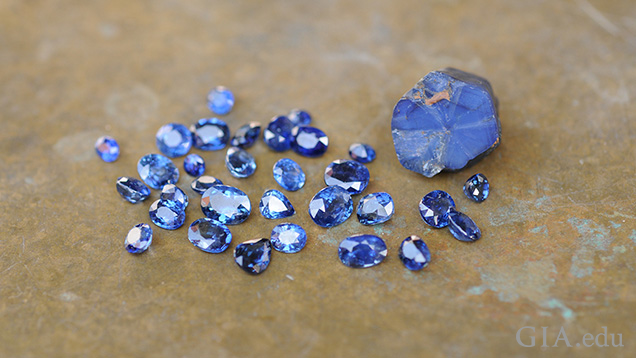An In-Depth Gemological Study of Blue Sapphires from Pailin, Cambodia
December 22, 2017

The Cambodian province of Pailin is an important historical locality that has produced many fine but often small stones for over a century. Currently, just a few mechanized mining operations remain active around Pailin; artisanal miners exploit river gravels in the dry season. Although today’s production is sporadic, gems previously mined from this deposit are found in the marketplace and in jewelry.
The Pailin gem field is centered on the eroded remnants of three volcanic cones that brought ruby and sapphire to the surface as passengers—xenocrysts—in alkali-basalt magma. Due to the climate, the alkali-basalt weathers very quickly, releasing stable minerals including corundum, garnet, and zircon, which miners find in secondary deposits.
Researchers from GIA’s Bangkok laboratory analyzed 68 sapphire samples collected during field expeditions to Pailin. The samples were fashioned to optimize them for laser ablation–inductively coupled plasma–mass spectrometry (LA-ICP-MS) chemical analysis, UV-Vis-NIR and Fourier-transform infrared (FTIR) spectroscopy, and inclusion studies using microscopy and Raman spectroscopy. Results from their study and field observations from the mining area appear in a new article titled An In-Depth Gemological Study of Blue Sapphires from Pailin, Cambodia
Pailin sapphires resemble gems from other basalt-related deposits in Thailand, Nigeria, Ethiopia, Australia, and northern Madagascar. As sapphires from these sources share similar geologic origins, it’s challenging to discriminate between them. Magnification of the Pailin sapphires revealed dense milky clouds, strong blue color zoning, and bands of minute particles, along with mineral inclusions such as pyrochlore, plagioclase feldspar, ferrocolumbite, goethite, zircon, and monazite. UV-Vis-NIR and FTIR spectra showed features typical of basalt-related sapphires. As with previous studies of basalt-hosted blue sapphires, the authors note that a combination of trace element chemistry and microscopy can help separate Pailin sapphires from samples from other localities.



